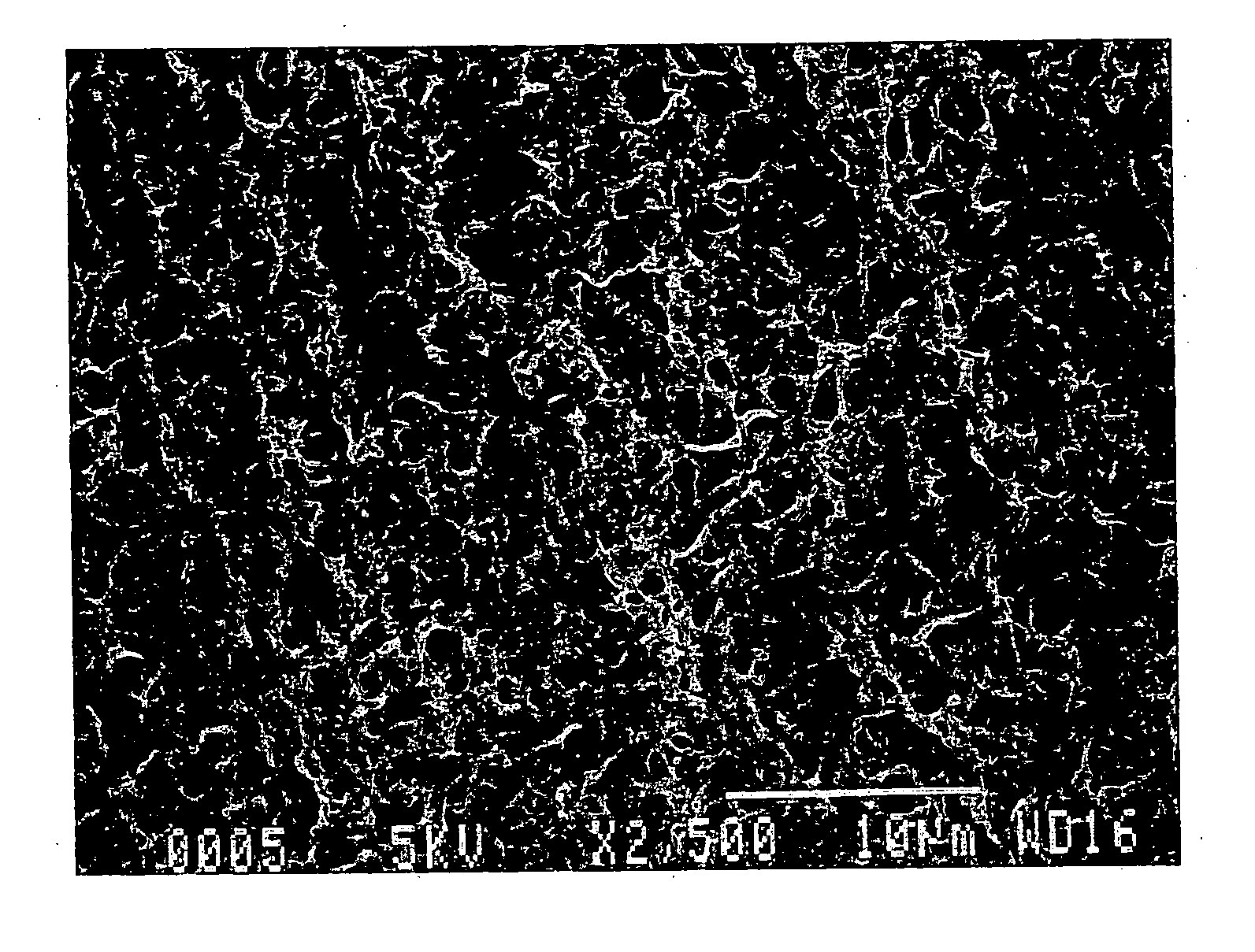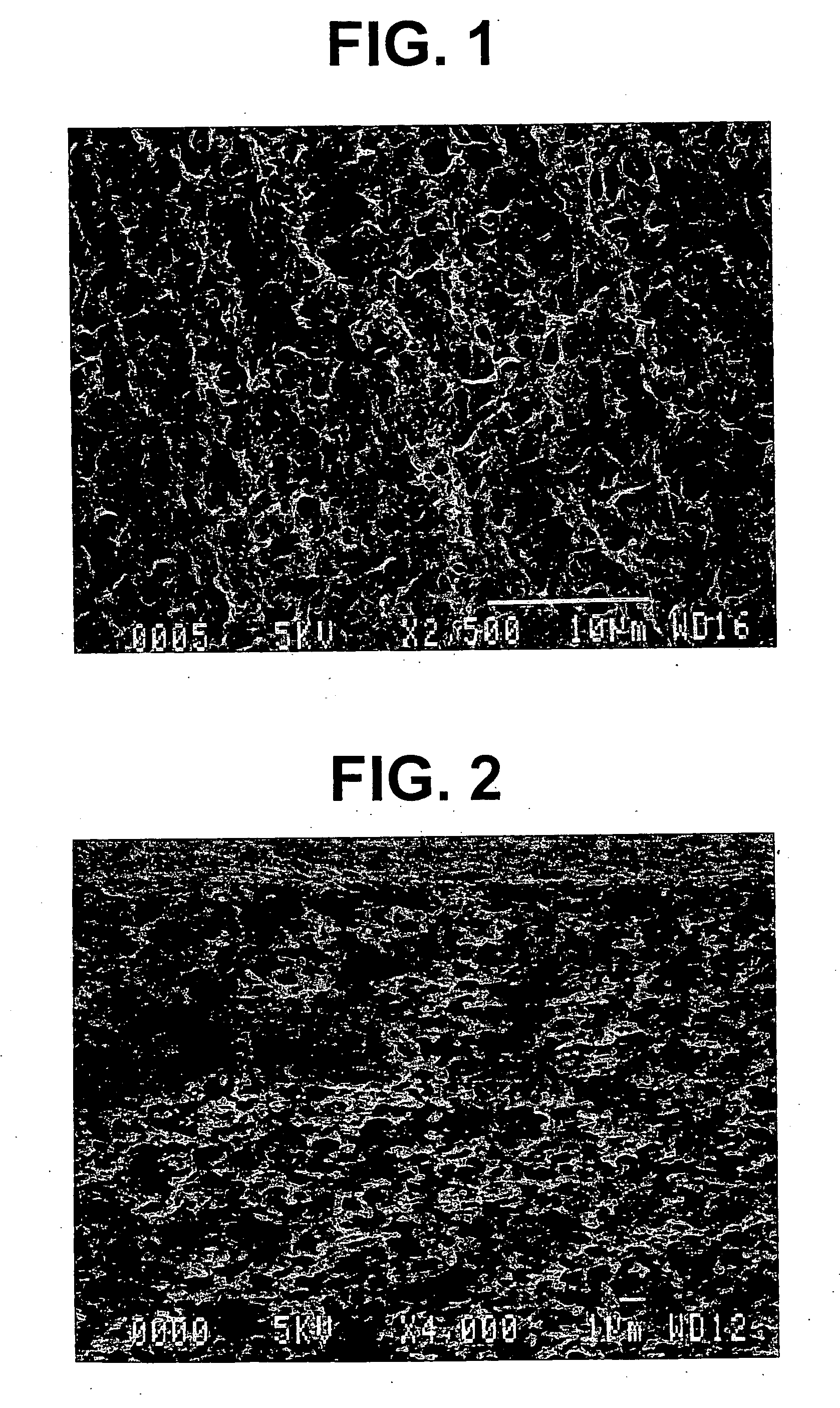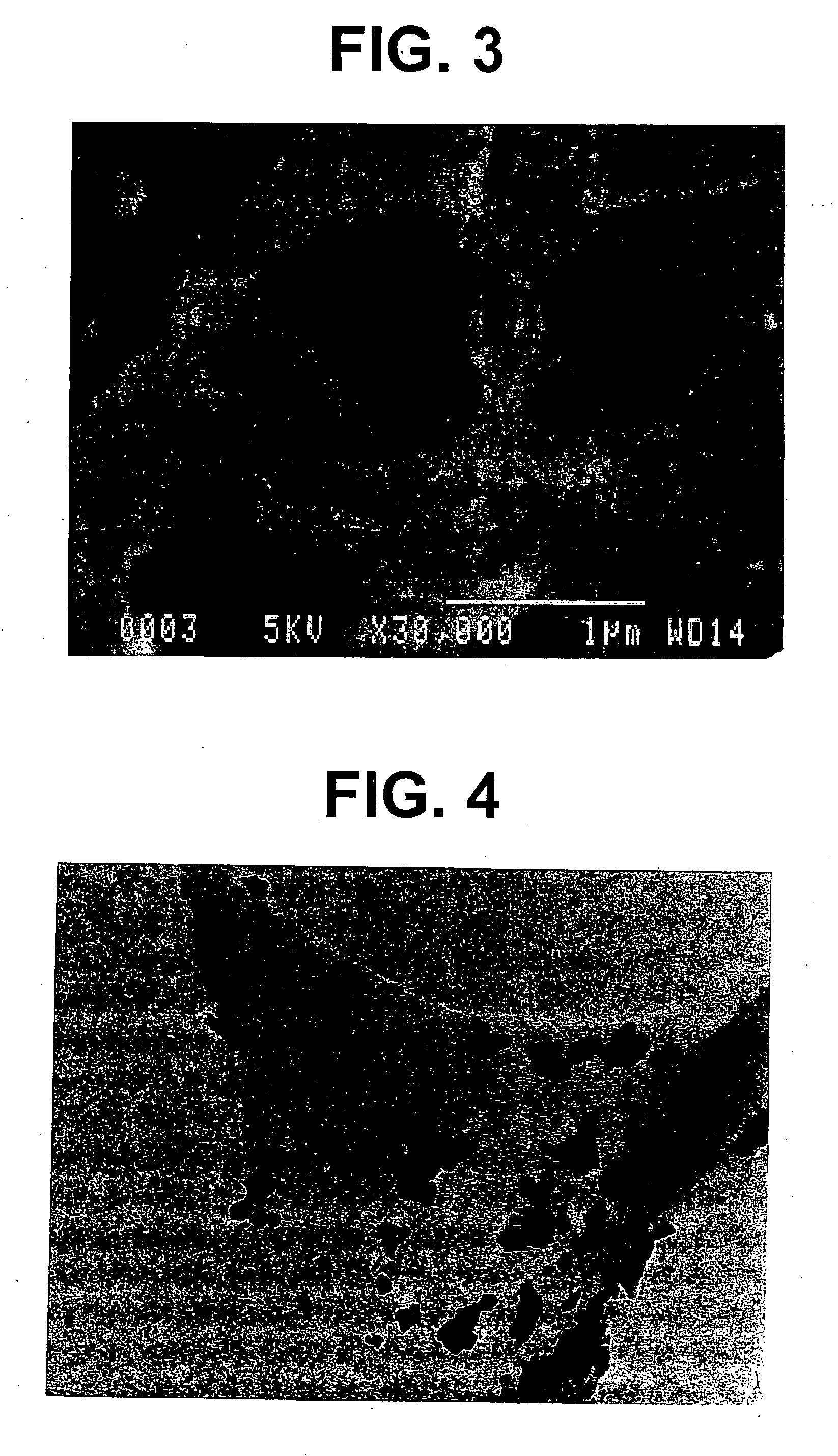Electrode base material for fuel cell
a fuel cell and electrode base technology, applied in cell components, acid electrolytes, electrochemical generators, etc., can solve the problems of increased contact resistance and heat loss, difficult to improve and inability to see uniform gas distribution as satisfactory, etc., to achieve uniform gas distribution, reduce contact resistance, and high electrical and thermal conductivities
- Summary
- Abstract
- Description
- Claims
- Application Information
AI Technical Summary
Benefits of technology
Problems solved by technology
Method used
Image
Examples
example 1
Preparation of Polyimide Porous Film:
[0072] 3,3′,4,4′-Biphenyltetracarboxylic acid dianhydride (s-BPDA) as a tetracarboxylic acid component and p-phenylenediamine (PPD) as a diamine component were dissolved in N-metyl-2-pyrrolidone (NMP) at a PPD:s-BPDA molar ratio of 1:0.998 to prepare a monomer solution having a total monomer concentration of 10 wt %. The monomer solution was polymerized at 40° C. for 10 hours to prepare a polyamic acid solution as a polyimide precursor. The polyamic acid solution had a solution viscosity of 7000 P as measured with a cone-plate viscometer at 25° C.
[0073] The polyamic acid solution was cast on a mirror-polished stainless steel plate to a thickness of about 100 μm. The surface of the cast film was covered with a microporous polyolefin film having an air permeance of 550 sec / 100 ml (U-Pore UP2015, available from Ube Industries, Ltd.) as a solvent substitution rate regulating material, taking care not to make wrinkles. The laminate was immersed in ...
example 2
Preparation of Polyimide Porous Film:
[0083] s-BPDA as a tetracarboxylic acid component and PPD as a diamine component were dissolved in NMP at a PPD:s-BPDA molar ratio of 1:0.999 to prepare a monomer solution having a total monomer concentration of 8.5 wt %. The monomer solution was polymerized at 40° C. for 15 hours to prepare a polyamic acid solution as a polyimide precursor. The polyamic acid solution had a solution viscosity of 600 P as measured with a cone-plate viscometer at 25° C.
[0084] The polyamic acid solution was cast on a mirror-polished stainless steel plate to a thickness of about 100 μm. The surface of the cast film was covered with a microporous polyolefin film having an air permeance of 550 sec / 100 ml (U-Pore UP2015, available from Ube Industries, Ltd.) as a solvent substitution rate regulating material, taking care not to form wrinkles. The laminate was immersed in 1-propanol for 7 minutes, whereby the solvents were exchanged via the solvent substitution rate re...
example 3
[0090] Each of the MEAs prepared in Example 2 and Comparative Example 4 was assembled into a fuel cell, and the current-potential characteristics of the cell were measured. As a result, the output at 0.35 V was 80 mA / cm2 and 430 mA / cm2, respectively. These results, converted on the basis of unit platinum loadings, correspond to 4000 A / g (Example 2) and 860 A / g (Comparative Example 4). The apparent activity per unit weight of the platinum catalyst of Example 2 is thus estimated at 4.5 times or more that attained in Comparative Example 4.
PUM
| Property | Measurement | Unit |
|---|---|---|
| porosity | aaaaa | aaaaa |
| diameter | aaaaa | aaaaa |
| size | aaaaa | aaaaa |
Abstract
Description
Claims
Application Information
 Login to View More
Login to View More - R&D
- Intellectual Property
- Life Sciences
- Materials
- Tech Scout
- Unparalleled Data Quality
- Higher Quality Content
- 60% Fewer Hallucinations
Browse by: Latest US Patents, China's latest patents, Technical Efficacy Thesaurus, Application Domain, Technology Topic, Popular Technical Reports.
© 2025 PatSnap. All rights reserved.Legal|Privacy policy|Modern Slavery Act Transparency Statement|Sitemap|About US| Contact US: help@patsnap.com



